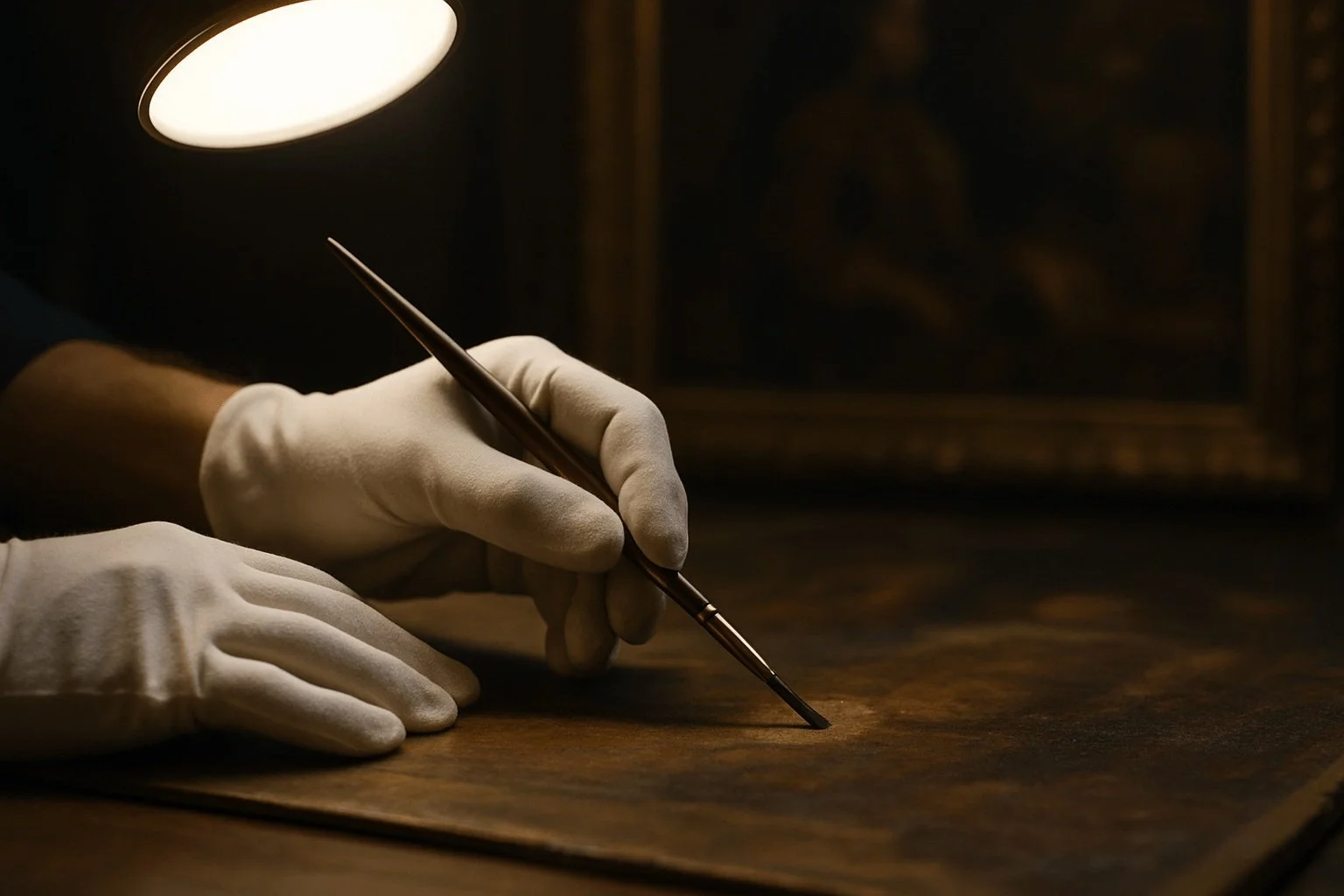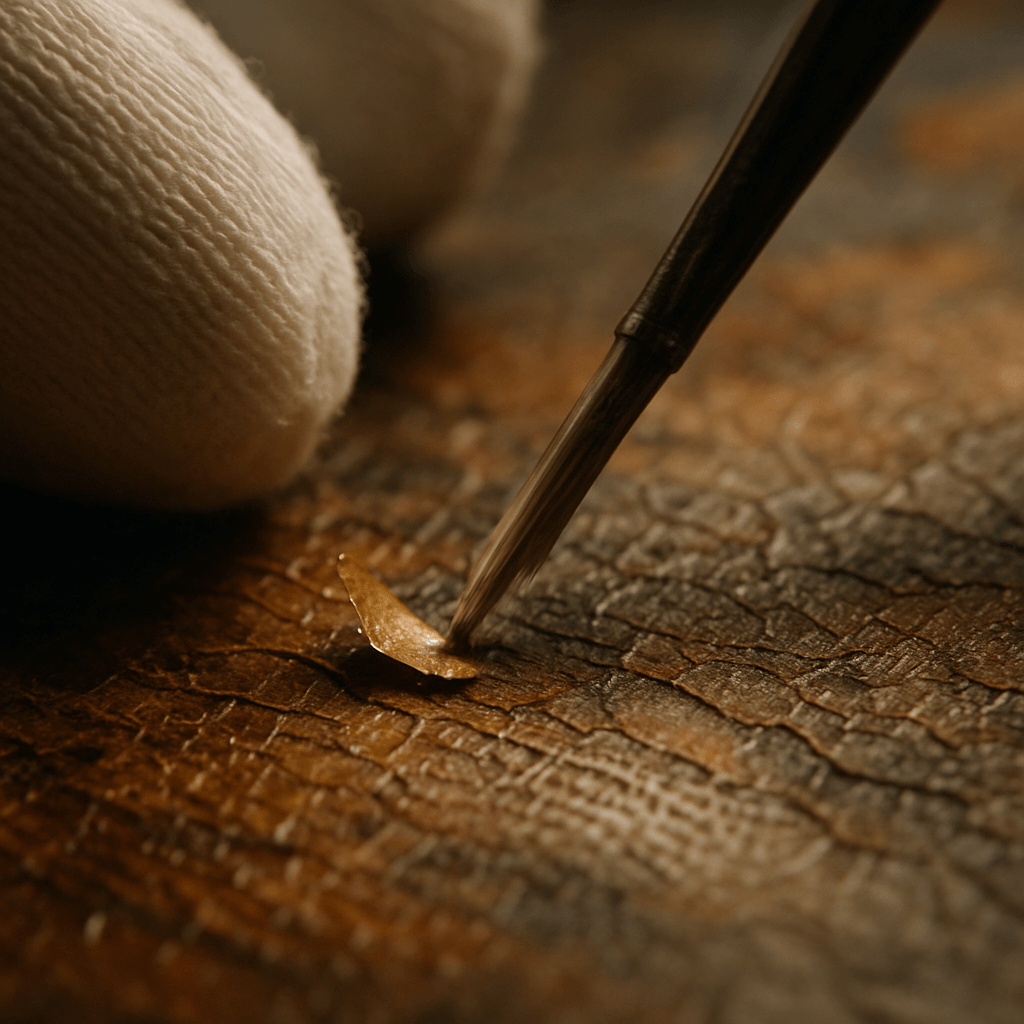Restoration, Part I: How Are Precious Works of Art Restored?
Most of us don’t think about restoration when we’re looking at art. We assume it’s just… there. Intact. Timeless. But the truth is, art doesn’t survive centuries on its own. It flakes, warps, yellows. Paint slips away. Canvases stretch. Wood cracks. And in the case of some paintings, history tries to erase them on purpose. All of this begs the question: How do people restore a painting?
First, let’s begin with something simple:
What Exactly Is Art Restoration?
Art restoration is equal parts science, craft, and historical detective work. At its core, it's the process of carefully cleaning, repairing, and preserving artworks to bring them as close as possible to their original state—while making absolutely clear what’s original and what’s been added by conservators. The goal is never to erase the marks of time entirely, but to stabilize them, understand them, and allow the work to be seen and studied with clarity.
The professionals who do this painstaking work are called conservators, though you might also hear them referred to as restoration specialists. They work in spaces that look more like a chemistry lab than an artist’s studio—rooms filled with microscopes, pigment samples, solvents, digital imaging equipment, and delicate brushes designed for retouching fragments of centuries-old paint no larger than a pinhead. These specialists rely on both high-tech tools and traditional materials, often combining innovations like infrared reflectography with techniques that have remained virtually unchanged since the Renaissance.
Courtney Books, conservator at the Saint Louis Art Museum examines Ernst Ludwig Kirchner's ‘Portrait of Gerti’ under a stereo microscope to see the underlying layers of paint.
Looking Beneath the Surface
A typical restoration begins with close examination and documentation. Conservators study the painting under visible and ultraviolet light, use X-rays to detect structural damage or hidden figures, and often conduct chemical analyses to determine the composition of pigments and varnishes. They’re looking for past repairs, overpainting, underlying sketches, and the overall condition of materials that might be hundreds of years old. Before anything is done to the surface of the work, it is photographed, scanned, and meticulously recorded—so that any intervention can be reversed if necessary.
Cleaning, Stabilizing, and Repairing the Past
Cleaning and stabilization follow, and this phase is often the most nerve-wracking. A single mistake in the cleaning process can cause irreversible damage, so conservators take extraordinary care. They might spend weeks or even months testing solvent mixtures on microscopic areas of the canvas to find one that removes layers of discolored varnish without disturbing the paint beneath. If the artwork is flaking or unstable, each fragile fragment is carefully secured—sometimes using a syringe and an adhesive delivered beneath the paint layer under magnification.
A conservator delicately re-adheres a fragile flake of paint using a fine-tipped brush.
Once the surface is clean and stable, losses are filled and inpainted. Here, the conservator’s brushwork begins—not to “fix” the painting, but to integrate its missing parts without confusing them with the original. These repairs are designed to vanish at a distance but remain visible upon close inspection. A properly restored painting doesn’t aim to look new; it aims to read clearly, coherently, and honestly.
A Blend of Ancient and Modern Techniques
What makes this work so fascinating is the blend of old and new. In the same day, a conservator might use a hyperspectral scanner to map pigment degradation and then turn around and apply rabbit-skin glue—an adhesive used by painters since the Middle Ages. The work requires not only technical mastery, but also a philosophical rigor. Every decision must be justified. Every alteration must be reversible. The guiding principle is to preserve and reveal—not to revise or replace.
The Restoration of Bélizaire
Sometimes, though, what gets revealed is not simply a lost brushstroke or forgotten sketch, but something far more consequential.
In 1837, a French painter working in New Orleans, Jacques Guillaume Lucien Amans, created a portrait of three white children from the Frey family. Standing among them in the original composition was a fourth child, a Black boy named Bélizaire. He was enslaved by the family. At some point in the painting’s history, Bélizaire was deliberately painted out—removed not by accident or decay, but by intention.
It was only through careful, painstaking restoration—initiated after imaging revealed the ghost of his figure—that Bélizaire was brought back into view. His erasure was not a natural consequence of time, but a historical decision. And his recovery was more than a technical achievement—it was a moral and cultural one. After more than a century of invisibility, Bélizaire now stands in full presence, his name known, his story part of the public record.
And Then Comes the Question: Why?
Why go to such lengths? Why dedicate months—or years—to unearthing the outline of a face someone went to great effort to hide?
That’s the question we’ll explore in Part II. Because the restoration of a painting is one thing. The restoration of cultural identity—the act of reclaiming what was stolen or suppressed—is something else entirely.
And sometimes, as Bélizaire reminds us, they are one and the same.



